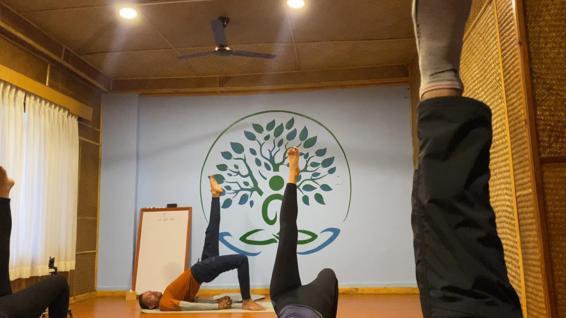3.2 Vinyasa yoga
Vinyasa yoga, also known as flow yoga, is a style of yoga that involves fluid, continuous movement between asanas. Vinyasa yoga is often fast paced and focuses on linking breath and movement. This is modern approach of practice.
Vinyasa yoga originated in India and is based on the principles of Hatha yoga. The word
"vinyasa" means "to place in a special way," and in Vinyasa yoga, this refers to the flow of movement between asanas. In a Vinyasa yoga class, you can expect to move seamlessly from one asana to the next, with the breath serving as the guiding force.
One of the main benefits of Vinyasa yoga is that it can be a physically demanding practice that helps to improve strength and cardiovascular endurance. In addition to its physical benefits, Vinyasa yoga also has mental benefits, as it helps to improve focus and concentration and to reduce stress and fatigue.
Vinyasa yoga is suitable for people of all ages and fitness levels, and it can be modified to meet the needs of each individual practitioner. It is important to listen to your body and modify the practice as needed to ensure that you are comfortable and safe.
There are many different styles of Vinyasa yoga, each with its own unique approach to the practice. Some styles, such as Ashtanga yoga, follow a set sequence of asanas that are performed in a specific order. Other styles, such as Jivamukti yoga, combine physical practice with spiritual teachings and activism.
Regardless of the style of Vinyasa yoga you choose, it is important to find a teacher who resonates with you and a practice that meets your needs. With regular practice and the guidance of a qualified teacher, Vinyasa yoga can be a powerful tool for improving physical and mental well-being.





